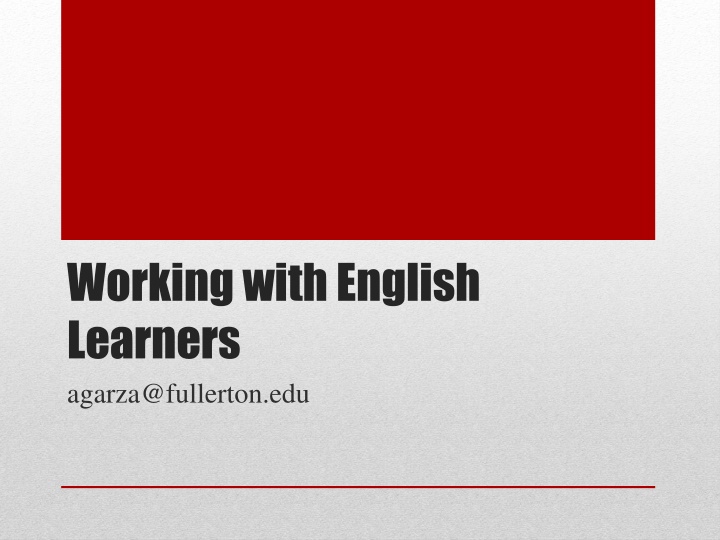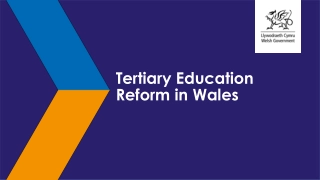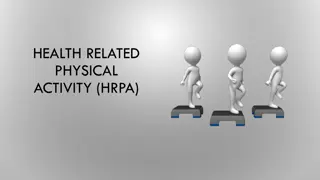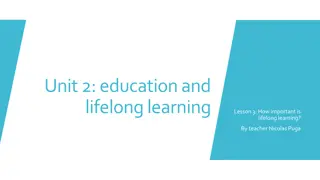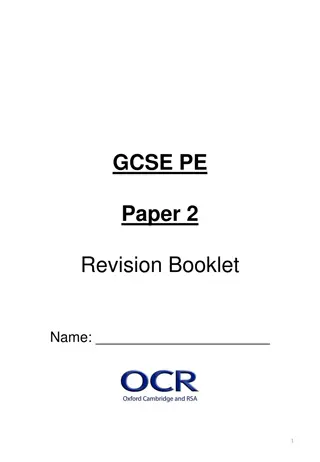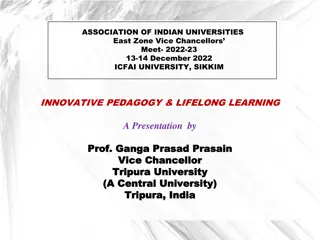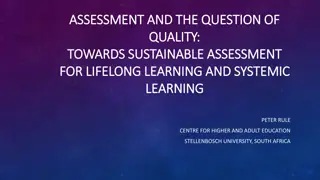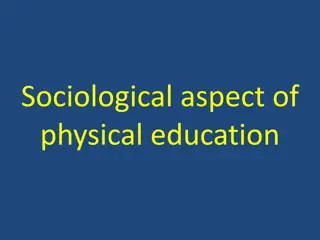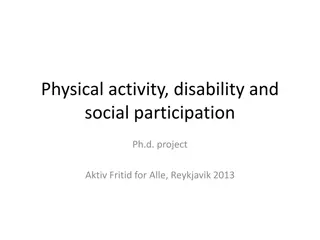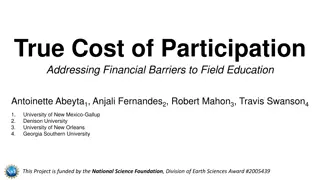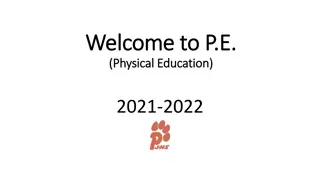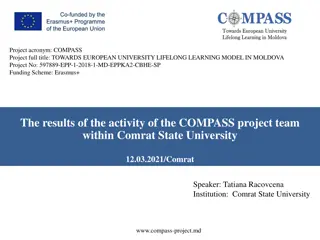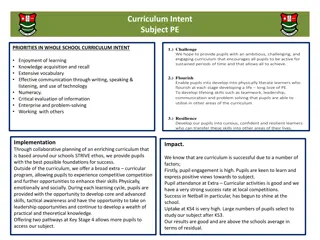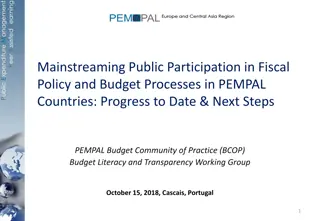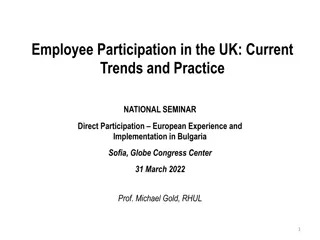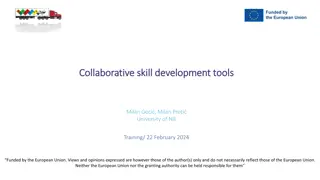Enhancing Physical Education for Lifelong Participation
Physical education in schools plays a crucial role in promoting regular physical activity among students. It comprises structured, supervised activities that aim to instill vital skills and values essential for lifelong participation in society. This includes two main categories: Curriculum PE lessons and Physical Education Teacher Education & Workforce training. Quality physical education empowers students to develop physical, social, and emotional skills necessary for a healthy lifestyle. It is imperative for schools to optimize PE lessons to help students achieve physical activity targets effectively.
Download Presentation

Please find below an Image/Link to download the presentation.
The content on the website is provided AS IS for your information and personal use only. It may not be sold, licensed, or shared on other websites without obtaining consent from the author.If you encounter any issues during the download, it is possible that the publisher has removed the file from their server.
You are allowed to download the files provided on this website for personal or commercial use, subject to the condition that they are used lawfully. All files are the property of their respective owners.
The content on the website is provided AS IS for your information and personal use only. It may not be sold, licensed, or shared on other websites without obtaining consent from the author.
E N D
Presentation Transcript
Working with English Learners agarza@fullerton.edu
-English learners should have daily English language development lessons -Books in both the home language and English should be available on a daily basis. (use a checkout system, as a reward )
Taken from: Bennett, C. (2011). Comprehensive Multicultural Education: Theory and Practice. Boston, Mass. Pearson Peregoy, S. and Boyle, O. (2013). Reading, Writing and Learning in ESL. (8thed.). Boston, Mass. Pearson
Eight Characteristics of Teachers who have attained high level of racial and cultural competence
-Are very comfortable with students -Engage students all the time -Have a personal positive connection with each student
-Have very high expectations for each student and follow through with them -Accept total responsibility for any students lack of success (persistence pays off) -Have a strong positive relationship with all the parents
- Constantly reflect on their practice & include others in the assessment of their practice - Develop and use culturally relevant lessons on a regular basis
Principles of Culturally Relevant Teaching
-Students must experience academic success, including literacy, numeracy, and the technological, social and political skills they need to be active participants in a democracy. Self esteem accompanies genuine academic success. What does this mean?
-Students must develop and/or maintain cultural competence, and the students home culture becomes a vehicle for learning. What does this include?
-Students must develop a critical conciousness through which they may challenge social injustice. What might this look like?
Examples of Culturally Relevant Teaching
An emphasis on cooperation and collaboration in the classroom -Encouraging students to rely on and support each other -Including students real life experiences in the curriculum
-Allowing students to ask their own questions and search for their own answers -Encourage students to lead discussions & other class activities
Working with English Learners
PREREADING -Build background knowledge -Motivating the learner -Setting purpose
-Some pre-reading strategies -Overview (preview of topic) -films -pictures -preview in L1
During Reading -Reading with a purpose -Monitoring comprehension -Engaging background knowledge
During Reading Strategies -Learning logs -Asking questions -Using headings/sub-headings -Answering questions
-Postreading -Organizing & remembering information -Using information
-Post-reading strategies -Artwork -Summarizing -Publishing/dictation -Reporting -Making a film
Other helpful strategies for ELs
-Before a lesson Review the concept -in the home language (L1) if possible -provide a book, film, youtube or information sheet (search google )
Before a lesson cont Teach key vocabulary
During the lesson -Use visuals, gestures, pair/share -Assign a bilingual buddy to EL -Repeat & define key vocabulary
-During the lesson cont -create a graphic organizer, writing or using pics of major concepts Examples: venn diagrams, clusters comic strips, charts, - ask questions that are comprehensible for Els (watch sequence of questions, ask questions that require one-word answers )
During the lesson cont Review the major concepts at the end of the lesson. encourage students to add a sentence using the vocabulary to their vocabulary journal
After the lesson -Modify the task for Els based on their English fluency Ex: instead of a paragraph, a sentence, or a pic and dication
